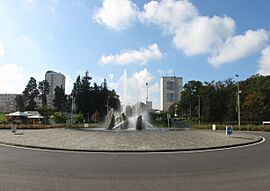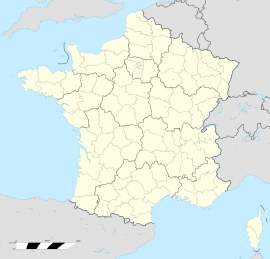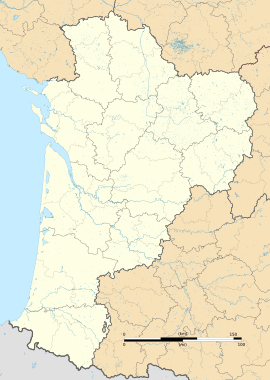Mourenx facts for kids
Quick facts for kids
Mourenx
|
||
|---|---|---|

Main route entering Mourenx
|
||
|
||
| Country | France | |
| Region | Nouvelle-Aquitaine | |
| Department | Pyrénées-Atlantiques | |
| Arrondissement | Pau | |
| Canton | Le Cœur de Béarn | |
| Intercommunality | Lacq-Orthez | |
| Area
1
|
6 km2 (2 sq mi) | |
| Population
(2021)
|
5,846 | |
| • Density | 970/km2 (2,520/sq mi) | |
| Time zone | UTC+01:00 (CET) | |
| • Summer (DST) | UTC+02:00 (CEST) | |
| INSEE/Postal code |
64410 /64150
|
|
| Elevation | 95–182 m (312–597 ft) (avg. 105 m or 344 ft) |
|
| 1 French Land Register data, which excludes lakes, ponds, glaciers > 1 km2 (0.386 sq mi or 247 acres) and river estuaries. | ||
Mourenx is a small town, also called a commune, located in the south-western part of France. It is found in the Pyrénées-Atlantiques department.
History of Mourenx
Mourenx has a long and interesting past. A settlement called Mourengs existed here as far back as the 11th century. In 1385, the village was home to about 27 families.
A big change happened in 1951. That year, large amounts of natural gas were found nearby in a place called Lacq. This discovery meant many workers were needed to process the gas.
To house these workers, a brand new town was built in 1958. It was carefully designed by architects and city planners named Coulon, Douillet, and Maneval. They planned the town with different types of housing and a central area for shops and services.
A famous French expert on society, Henri Lefebvre, even studied Mourenx and its people when the town was first created.
Population Changes
The number of people living in Mourenx has changed over the years. When the new town was built, many people moved there for work.
| Historical population | ||
|---|---|---|
| Year | Pop. | ±% p.a. |
| 1968 | 10,734 | — |
| 1975 | 9,469 | −1.78% |
| 1982 | 9,036 | −0.67% |
| 1990 | 7,460 | −2.37% |
| 1999 | 7,576 | +0.17% |
| 2007 | 7,549 | −0.04% |
| 2012 | 6,970 | −1.58% |
| 2017 | 6,485 | −1.43% |
| Source: INSEE | ||
See also

- In Spanish: Mourenx para niños




